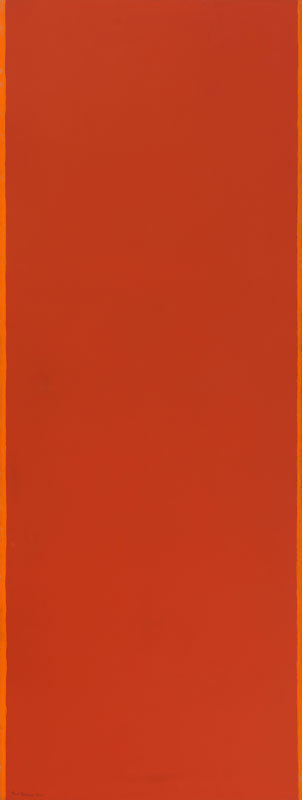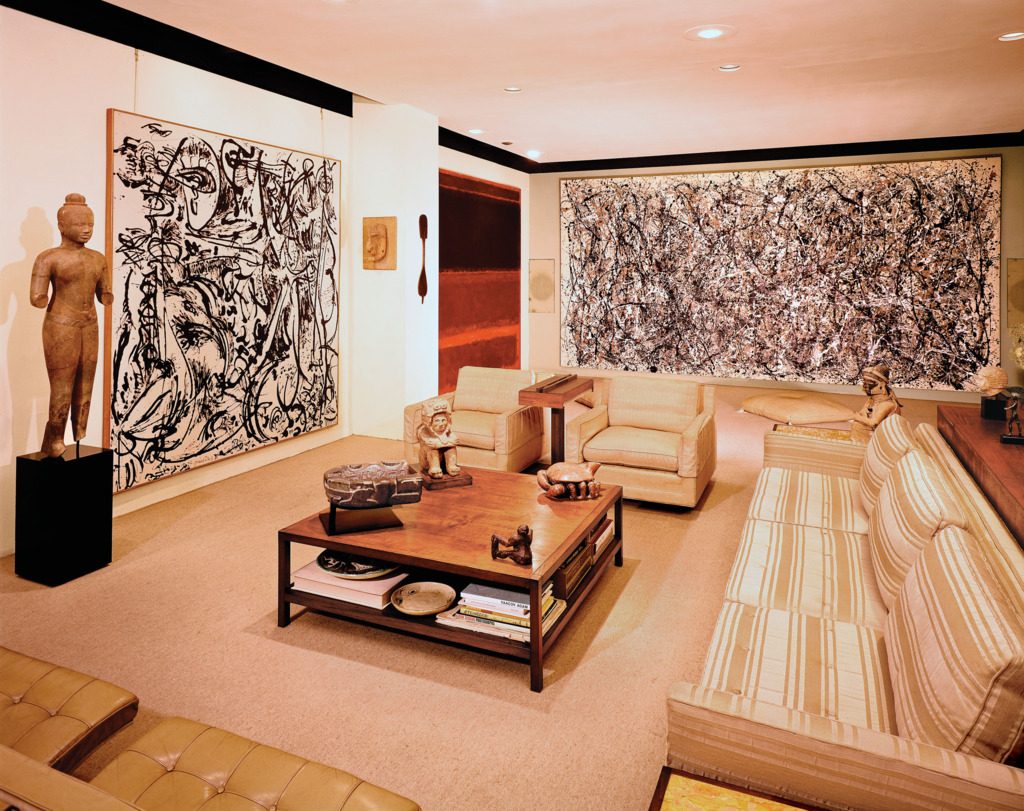Gallery Guide Susan Morrison continues her multipart series on the contributions of the AGO’s Women’s / Volunteer Committees to the gallery’s collections.
This Week: The Women’s Committee Misses Out on Barnett Newman
In May 1961, the Purchase Committee of the Women’s Committee, having determined to commit its resources to the acquisition of contemporary American paintings, gave the New York collector Ben Heller the sum of $15,000 to buy a Rothko for them. They added, however, that they would leave the selection entirely up to his judgement.
Heller was a very astute collector of the New York school, personally buying some of the greatest paintings of that period, including Pollock’s One: Number 31, 1950 and Echo, both now at MoMA. In 1973, he sold another of his Pollocks, Blue Poles (1952) to the National Gallery of Australia for a record-setting $2,000,000. Instead of buying a Rothko (which he found to be more expensive and hard to get), Heller chose a Barnett Newman painting called Day One (1951-2), for the WC. Purchased directly from the artist himself, the cost was $13,500 ($15,000 minus a 10% Museum discount).
To give some context to this, Barnett Newman worked in a very different way from the other Abstract Expressionists. While his work was abstract, it certainly wasn’t expressionist. Day One is a narrow vertical canvas over 11 feet high and 4 feet wide, painted a reddish-orange colour, with a lighter orange stripe (or zip, as he called them) on either vertical edge. Art historians have come to consider him an important precursor to Minimalism and Colour Field painting. Newman’s first two New York shows in the early 1950s had been dismissed by the majority of the New York art world, but by the end of the decade, thanks to the critical support of Clement Greenberg among others, it was starting to catch up with him. Ben Heller firmly believed that Newman was an excellent investment for the money.
Unfortunately, the WC didn’t agree with him. Within two weeks of the painting’s arrival at the Art Gallery of Toronto in August, 1961, Mrs David Meltzer, the chair of the Purchase Committee, reported:
“The consensus of opinion is that Mr Heller’s judgement, in choosing Day One, which is such an avant garde example of American contemporary painting, was in error, and is more likely to do harm than good for that school of art in this city.”
This, in spite of the comment that:
“The leading (young) artists of Toronto— Coughtry, Hedricks, Nakamura and Snow, have seen the Newman and they consider it a great picture and an important acquisition.”
Mrs Meltzer tried to negotiate its return to the artist, who, deeply offended by this rejection, refused to take it back. When she turned to Heller for help, he asked the WC to hold off their decision in order to give him a chance to convince them of its merit, offering to send a small group of American contemporary paintings to the AGT for exhibition and to give a public lecture explaining the art’s importance.
And so American Paintings Selected by Ben Heller was exhibited at the AGT October 13-22, 1961. It was the first show sponsored by the WC, and the first show of its kind in Canada. The artists represented were the cream of the New York school: Pollock, de Kooning, Rothko, Newman, Gottlieb, Kline, Guston, Still, Hofmann, Motherwell, Reinhardt and Bradley Walker Tomlin. On October 16, Heller presented his thoughts on the subject of contemporary art to an audience of more than 300. While the talk and the exhibition were considered a great success, a vote taken shortly thereafter by the WC unanimously rejected Day One once again.
The fiasco wasn’t over yet, however, as Newman continued to refuse to accept the painting back. He considered it sold to the AGT and directed the shipping company to leave it in Toronto. However, eventually, Heller and the AGT’s director William Withrow managed to disengage the WC from its obligations, and the painting went back to New York, to be bought a few years later by the Whitney Museum.
As is well known, of course, three decades later Barnett Newman’s painting Voice of Fire (1967) was the site of another Canadian public battle over abstract art in 1990, when the National Gallery in Ottawa purchased it from Newman’s widow for $1.8 million.
Previous Post: Case Studies 1: Franz Kline’s Cupola
Next Up: Case Studies 3: Picasso’s Seated Woman/Femme Assise 1926-1927


